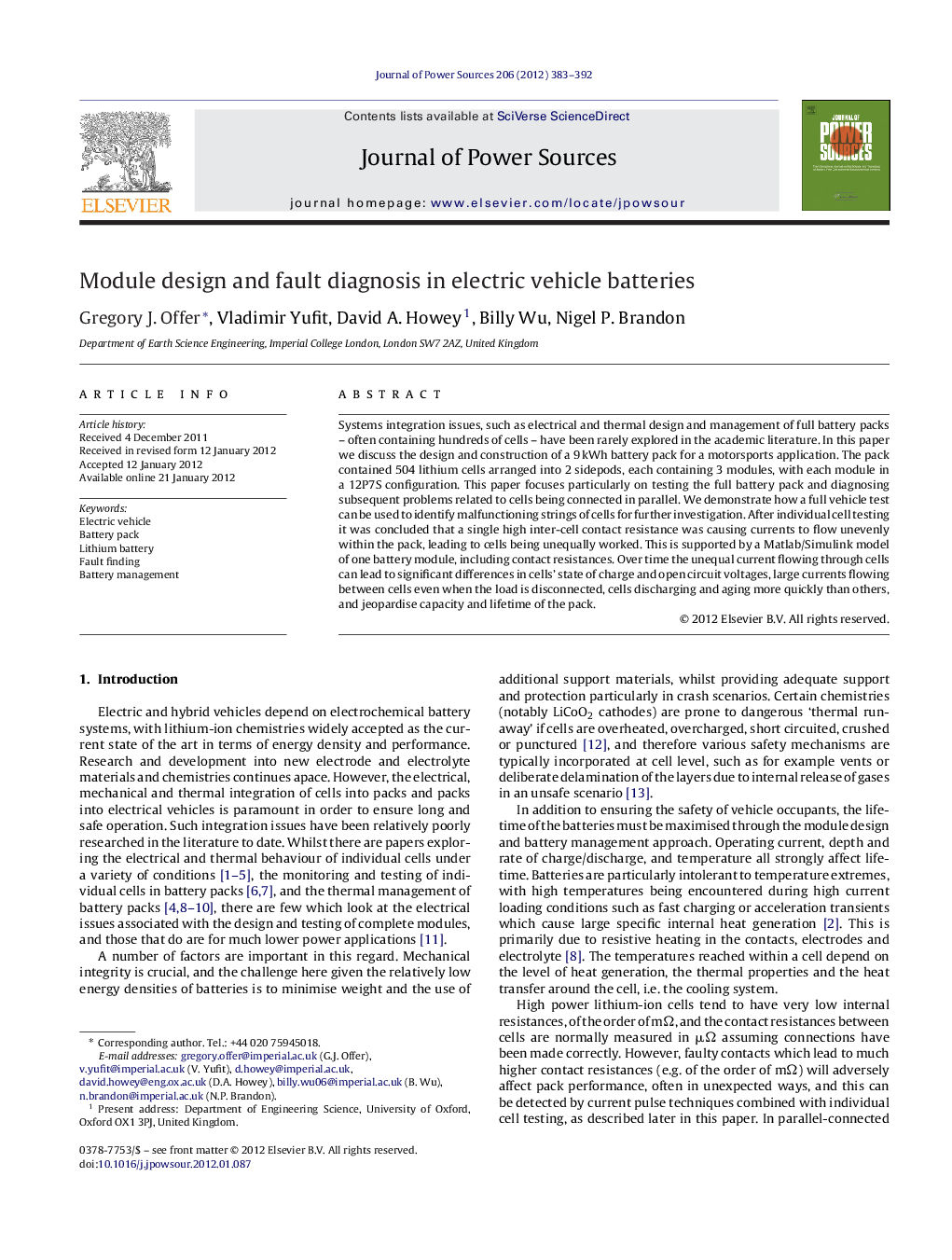| Article ID | Journal | Published Year | Pages | File Type |
|---|---|---|---|---|
| 1293101 | Journal of Power Sources | 2012 | 10 Pages |
Systems integration issues, such as electrical and thermal design and management of full battery packs – often containing hundreds of cells – have been rarely explored in the academic literature. In this paper we discuss the design and construction of a 9 kWh battery pack for a motorsports application. The pack contained 504 lithium cells arranged into 2 sidepods, each containing 3 modules, with each module in a 12P7S configuration. This paper focuses particularly on testing the full battery pack and diagnosing subsequent problems related to cells being connected in parallel. We demonstrate how a full vehicle test can be used to identify malfunctioning strings of cells for further investigation. After individual cell testing it was concluded that a single high inter-cell contact resistance was causing currents to flow unevenly within the pack, leading to cells being unequally worked. This is supported by a Matlab/Simulink model of one battery module, including contact resistances. Over time the unequal current flowing through cells can lead to significant differences in cells’ state of charge and open circuit voltages, large currents flowing between cells even when the load is disconnected, cells discharging and aging more quickly than others, and jeopardise capacity and lifetime of the pack.
► We report testing procedures for a battery pack in a vehicle environment. ► We develop a methodology to find faults caused by inter cell contact resistances. ► A simple model capable of reproducing the results was developed. ► The model can be used to accurately pinpoint the fault. ► Unequal current paths can be a problem when using parallel strings of cells.
